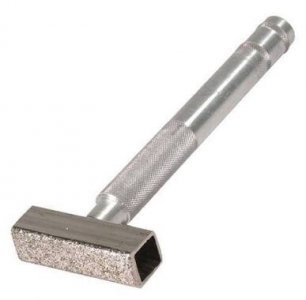- Joined
- Jan 17, 2017
- Messages
- 16
Gentlemen -
I have several bench grinders fitted with an assortment of general-purpose stones.
most have been "abused" with lawnmower blades and other heavy grinding tasks.
I do not have a tool for dressing the stones - didn't need such a thing before I bought a lathe. If I am to learn to shape HSS tooling, I need better stones and the tools to maintain them.
To that end, I would appreciate any suggestions on diamond dressing tools and holders/jigs.
Neal
I have several bench grinders fitted with an assortment of general-purpose stones.
most have been "abused" with lawnmower blades and other heavy grinding tasks.
I do not have a tool for dressing the stones - didn't need such a thing before I bought a lathe. If I am to learn to shape HSS tooling, I need better stones and the tools to maintain them.
To that end, I would appreciate any suggestions on diamond dressing tools and holders/jigs.
Neal

